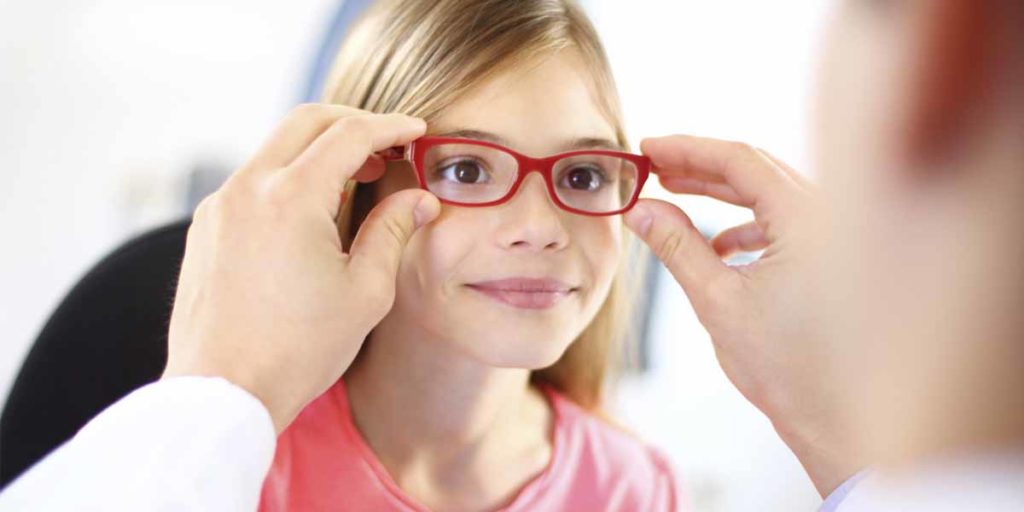If your child is nearsighted, you are probably wondering if there is anything you can do to prevent or help slow nearsighted progression so your child will not need stronger glasses year after year. This is a common question that parents ask in our exam room.

At BVO, we strongly believe in implementing myopia control early on to prevent your child from developing higher levels of nearsightedness (myopia). Moderate to high levels of nearsightedness is associated with serious eye problems and disease later on in life such as early cataracts, glaucoma, and retinal detachment.
Currently, studies have shown four effective ways to control or slow down nearsighted progression:
- Orthokeratology (“ortho-k”) over-night contact lenses
- Multifocal contact lenses
- Multifocal eyeglasses
- Atropine eye drops
Orthokeratology (“Ortho-K”)
Orthokeratology uses a specially designed hard (gas permeable) contact lenses that are worn during sleep at night to reshape and mold the cornea. By reshaping the cornea to a desired pattern, your child’s nearsighted will be temporarily corrected so he/she won’t need to wear glasses during the daytime. Several research studies around the world have proved that orthokeratology therapy help prevent or slow down nearsighted progression.
Multifocal Contact Lenses
Special multifocal contact lenses can be used to control or slow down nearsighted progression. Multifocal contact lenses contain different prescriptions across the contact lenses compared to regular contact lenses that only have one prescription all across. The center zone of the multifocal contact lenses helps correct the full amount of nearsighted while the outer zones contain weaker prescriptions. The outer zone areas with the weaker prescriptions help relax your child’s eyes when they are doing near tasks such as reading, doing homework, playing on the iPad or the cell phone.
Multifocal Eyeglasses
Similarly to multifocal contact lenses, multifocal eyeglasses contain the different prescriptions from top to bottom. The top portion of the lens contains the full prescription and the prescription gets weaker gradually towards the bottom. When your child is doing near work and looking through the bottom of the lenses, he/she won’t have to focus (accommodate) as much.
Atropine Eye Drops
Atropine eye drops dilate the pupil and temporarily paralyze the focusing muscle of the eyes. The eye’s focusing mechanism is completely relaxed with the use of atropine eye drops. Atropine is not used as a first choice of method to control myopia due to the eye drop’s potential side effects: light sensitivity and blurred near vision.
A lot of parents have asked our doctors to under-correct or prescribe less nearsightedness prescription so their children’s nearsightedness will not grow faster. It is worth noting that under-correction of nearsightedness is ineffective at slowing myopia down. Under-correction of spectacle lenses also makes your child’s distance vision blurry, which puts your child at a disadvantage in the classroom and in life. More recently, studies have shown that more outdoor time may also reduce myopia progression. There are many ways to control myopia as discussed above, we highly recommend controlling your child’s nearsightedness as early as possible to prevent higher eye health risk in the future.
Schedule a nearsightedness control evaluation with us today by clicking here!
The content on this blog is not intended to be a substitute for professional medical advice, diagnosis, or treatment. Always seek the advice of qualified health providers with questions you may have regarding medical conditions
